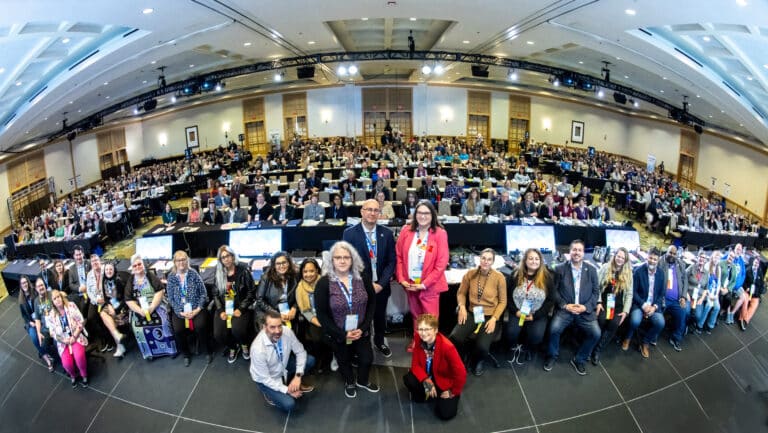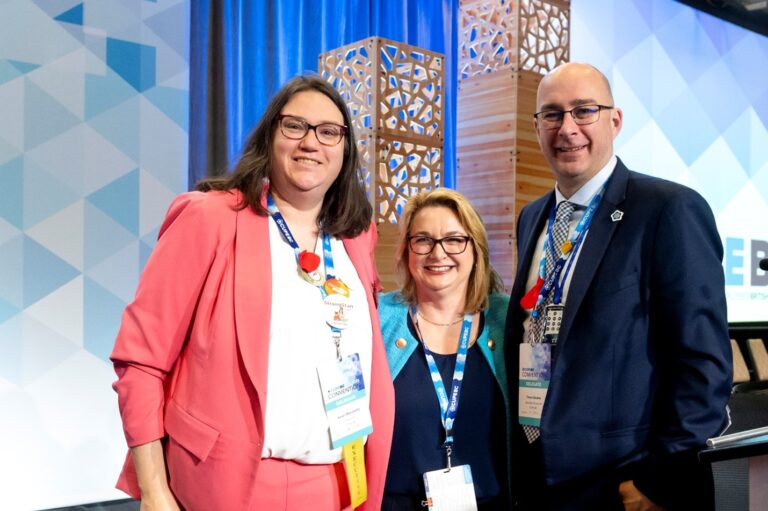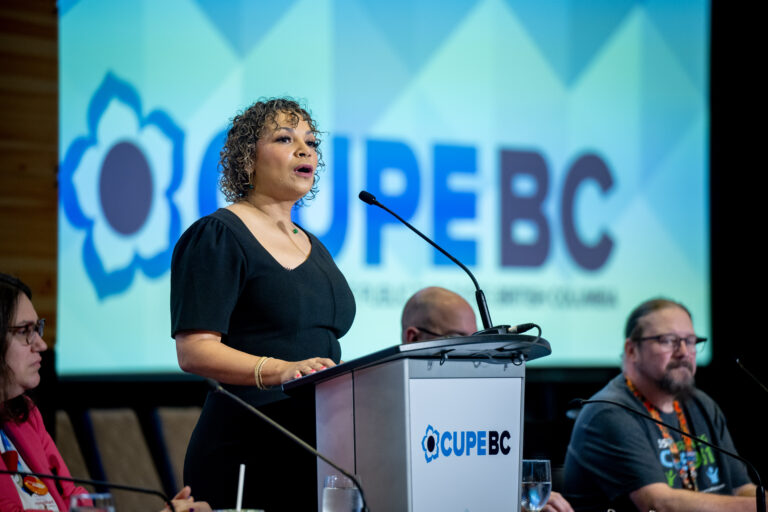VANCOUVER—CUPE BC’s Committee Against Racism and Discrimination offered a rare glimpse into bygone Vancouver with a Black History Month event on Saturday (February 21) that celebrated the rich social and cultural history of the Hogan’s Alley community in the city’s Strathcona neighbourhood.
“Until 2013, when I was at the City of Vancouver’s Black History Month kick-off, I had no idea that there was an area known as Black Strathcona, and I’d been here twenty-three years,” said CUPE BC Diversity Vice-President and CARD co-chair Michele Alexander, who emceed the event.
“I work outside as a parking enforcement officer, and I can walk the streets for one month and not see one Black person. So it’s interesting that there was this very vibrant community of about eight hundred people who lived down here.”
CUPE BC General Vice-President Dal Benning, bringing greetings on behalf of the BC Division, recalled the historical and cultural contributions of Black British Columbians who arrived in the mid-nineteenth century and became early pioneers in building the foundations of the province.
“The Black community here in Strathcona produced world-class athletes, musicians, entertainers, restaurant and nightclub owners, entrepreneurs, community builders, union and political activists,” said Benning.
For examples, he cited Sir James Douglas, B.C.’s first governor; Rosemary Brown, the first Black woman elected to a Canadian provincial legislature; Harry Jerome, Olympic track athlete and recipient of the Order of Canada; Mifflin Gibbs, an attorney, judge, diplomat and banker; Selwyn Romilly, a B.C. Supreme Court judge; Joe Fortes, Vancouver’s first official lifeguard and a respected public figure; and Emery Barnes, a BC Lions athlete and long-serving MLA.
Randy Clark, a retired school principal whose family descends from the first settlers who arrived on Saltspring Island from San Francisco in 1858, recalled arriving in the neighbourhood as a twelve-year-old boy in 1965.
“There were a number of Black people who lived in the Strathcona area. A lot of it was related to the CN train station, and there were a number of residences available to the porters. Also, just across what we called the old Georgia viaduct was the bus station,” said Clark.
Clark showed the audience a 1950s-era directory from a Black Methodist church, Fountain Chapel, which was located at the corner of Jackson and Prior. Then he read out names and street addresses of families who lived in the neighbourhood, which ran between Union and Prior Streets from Main Street to Jackson Avenue. He recalled how the community began to disintegrate with the announcement that a new viaduct would be built on Prior Street. If not for that development, he said, there might still be a thriving Black community in the area today.
“Once that information got out in the mid-50s, people then began to think, ‘Well, maybe it’s not such a great idea to live in this neighbourhood if they’re going to build a new viaduct,” he said. “And then members of the community began to seek housing elsewhere. If there’s one thing that I think had a negative effect on the Black community here, it was the politics at the time and the decision to build that new viaduct where they did, which was part of the idea of building a freeway system through Vancouver—which, as it turned out, never happened.”
Pointing to future developments in the neighbourhood, Clark said he hopes there will be some kind of formal recognition of the people who once lived in the community and the families that are still around today. “My hope is that when they do tear down the viaduct, maybe they will name one of the streets in honour of the black families who lived in this community,” he said.
Clark’s sister, Bertha Clark, also known as the poet Adelenedasoul, read a colourful prose poem about their grandmother’s famous business, Vie’s Chicken and Steakhouse at 209 Union Street, that brought the neighbourhood back to life.
“The cops would come in after their beat, the cabbies would come in off the street, and the entertainers back then, when they came to town, would walk to her doors because grandma didn’t mess around—that’s right,” she said.
“Ella Fitzgerald, Lou Rawls, Duke Ellington, Billie Holiday, Lena Horne, Diana Ross and the Supremes, Sammy Davis Jr. would come in clean. Vie’s Chicken and Steaks was a hot, hot, hot part of that night scene, you hear me?”
Gary Myers, who grew up in a house on Keefer and Heatley that’s still there today, recalled Hogan’s Alley as a safe neighbourhood to grow up in—a place where, when the Barnum & Bailey circus came to town, the local children’s idea of trouble was to sneak in to watch the show. Later, as an adult, he recalled seeing singer Marvin Gaye at one of the nightclubs.
Slam poet Kevan Cameron, co-editor of The Great Black North: Contemporary African-Canadian Poetry, paid tribute to Malcolm X on the fiftieth anniversary of the U.S. civil rights leader’s assassination. He then recited three poems, including “Speak,” which invited audience participation, and “Jimi’s Altar,” a homage to legendary rock guitarist Jimi Hendrix, who briefly lived in the neighbourhood with his grandmother Nora.
Jazz and blues singer Phyllis Braithwaite-States, with piano accompaniment, then sang three songs, including “God Bless the Child” and “Fly Me to the Moon.”
After the formal part of the program, those in attendance were treated to a soul food lunch of barbequed chicken, black-eyed peas, corn bread, and macaroni and cheese. That was followed by a walking tour of the neighbourhood in which participants were shown some of the landmarks of the Hogan’s Alley period—including the Jimi Hendrix shrine at 207 Union Street.
Also in attendance was CUPE National Diversity Vice-President Yolanda McLean, who travelled from Ontario for the event.
The event was organized by CUPE BC’s Workers of Colour Working Group and co-sponsored by CUPE locals 15, 23, 379, 389, 391, 402, 728 and 1004.
To see photos of the event, visit the gallery.





